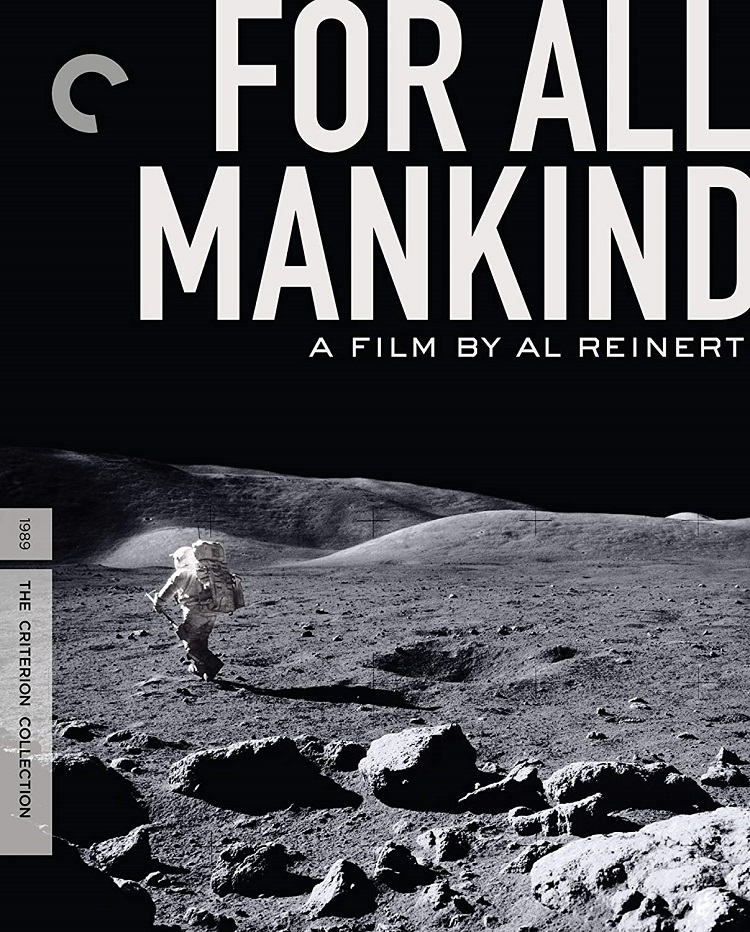
Using the 16mm footage recorded during the nine manned Moon flights between December 1968 and November 1972, director Alan Reinert tells a story beyond that of the Apollo missions in his compelling 1989 documentary For All Mankind.
From the NASA archives, Reinert splices together sequences of different missions. On the soundtrack he adds audio from interviews conducted with 13 of the astronauts. Making the intriguing decision not to identify anything or anyone in post production, the director appears to make a statement that a trip to the moon is not solely the success of these brave and heroic men. Rather, it is one long endeavor that also belongs not only to the nameless and faceless people working in NASA’s Mission Control Center in Houston, but to the thankless multitudes that came before whose work and ideas pushed mankind to escape its terrestrial bounds.
The images of the take-off are enthralling as the flames of propulsion break the rocket away from its moorings, sending it straight through the blue and into the black. It’s amazing that the astronauts, these pioneers of the final frontier, could be prepared in advance for the awe-inspiring experiences that would await them. Sure, the astronaut tethered to a capsule, like a water skier, may be unable to discern he’s traveling at 25,000 M.P.H. in orbit around the Earth, but if leaving a city and going out into a natural setting can be a humbling experience for a human being, what prepares the ego to be off the planet, face to face with the infinite vastness of space? In the commentary track, Apollo 17 commander Eugene A. Cernan, the last man to set foot on the moon, says it is seems unreal to him and he went through it.
For All Mankind contains funny moments, scary moments, and occasions that combine the two. It’s hysterical to hear one astronaut explain using the restroom was the toughest thing about zero-G. Things get tense when a leak in the module is discovered. Watching the men stumble around in the lower gravity, like children learning to walk, is amusing until it is pointed out any fall could cause a tear in their suit and expose the astronaut.
The imagery is marvelous to behold. For all the iconic sights and sounds, most notably Neil Armstrong’s small step and giant leap, there are plenty of wonderful new discoveries. Some shots of the Earth, as it appears to move across the blackness of space, look as if they are special effects, like a picture moved across a black surface. Much of the footage of the capsules as they float and spin through the space and the Moon’s atmosphere look straight out of Stanley’s Kubrick 2001.
The new edition created in 2009 by The Criterion Collection, which tied in with the 40th anniversary of the Apollo 11 launch and the 20th anniversary of the film’s release, is chock full of Special Features. There is a commentary by Reinert and Cernan. “An Accidental Gift: The Making of For All Mankind” is a new 32-minute documentary with Reinert, Apollo 12 and Skylab astronaut Alan Bean, and NASA archive specialists. “On Camera” is a 20-minute collection of excerpted on-screen interviews with 15 of the Apollo astronauts, some of which is taken from Jeff Roth’s The Wonder of It All and Mickey Lemle’s The Other Side of the Moon and Our Planet Earth. A new video features Bean commenting on 24 of his painting. “NASA Audio Highlights” presents 21 sounds bites from the first 10 years of the U.S. space program, from Alan Shepard’s first ride into space on Freedom 7 to Cernan’s final words on the moon (“Man’s Last Step”). “3,2,1…Blast Off!” is a brief amount of liftoff footage from five different rocket boosters. There is an optional on-screen identification of astronauts and mission control specialists, which I recommend on a repeat viewing, although it changes the dynamic of the film. I would have preferred a way to identify the offscreen speakers as well. The booklet contains essays by film critic Terrence Rafferty and Reinert.
For All Mankind closes with a very touching dedication to the men and women who have given their lives in the exploration of Space, people who believed in something bigger than themselves. It’s an endeavor members of the species should participate in more often, and this documentary serves as a great source of inspiration in that direction.